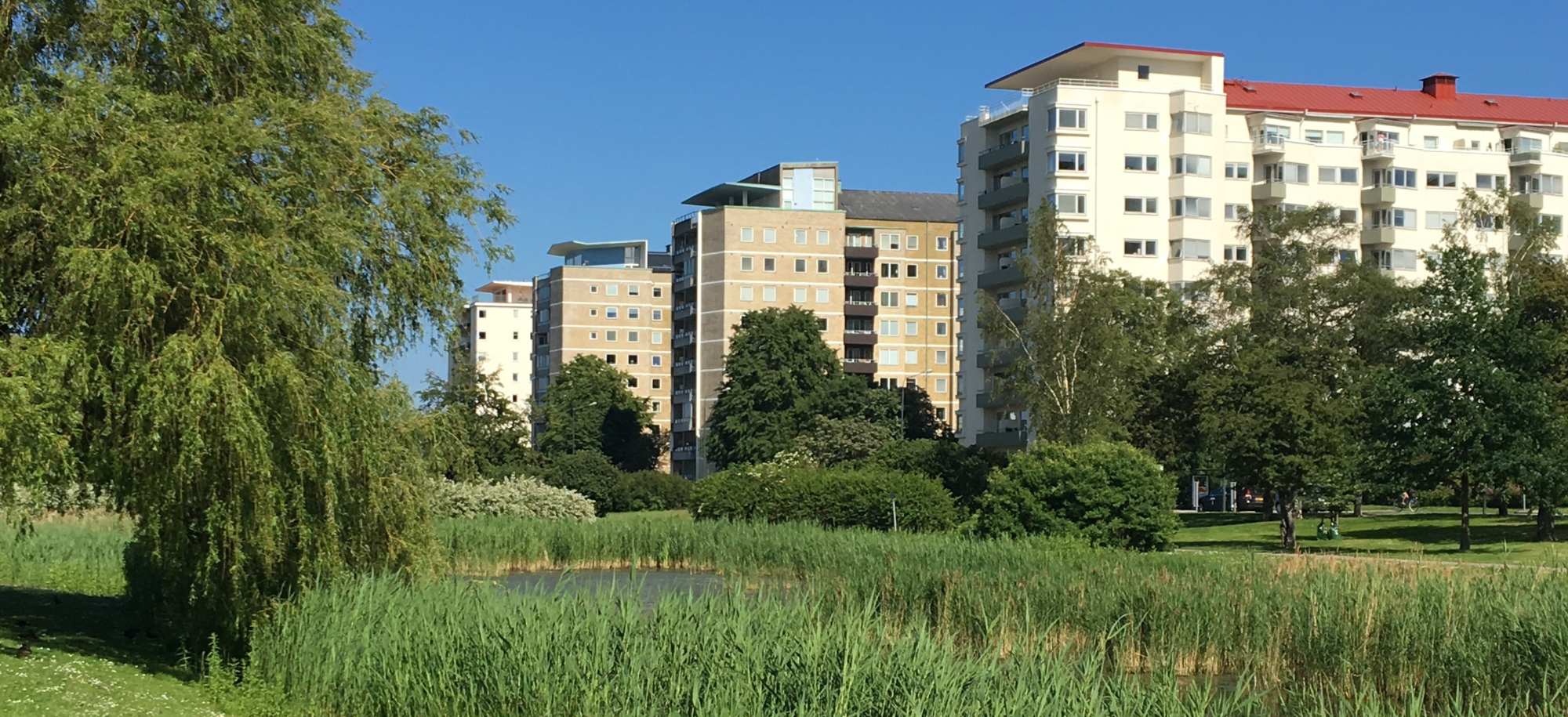How cities are embracing nature-based solutions to tackle climate change and biodiversity loss

As the planet warms, the demand for keeping cool is growing. The International Energy Agency estimate that air conditioners and electric fans today account for about 10% of all global electricity consumption and will triple by 2050 – requiring the equivalent of all the electricity currently used by the USA and Germany just to keep us cool.
Cities are at the heart of this problem.
Home to more than half of the world’s population and rapidly expanding, cities are predicted by the IPCC to experience higher air temperatures and more frequent extreme heat risks under both 1.5 and 2 degree scenarios for future climate change than their surrounding rural areas. This is because of what is called the ‘urban heat island effect’ where urban roads, buildings and pavements absorb and reflect heat back into the city.
Urban heat is uncomfortable and can also be deadly – extreme heatwaves have led to excess deaths across the world. It also has an effect on economic productivity and social well-being. Cooling cities is now an ever more urgent challenge.
As urban temperatures goes up, reaching for the air conditioning is becoming ever more common. Yet as the IEA demonstrates this will only make the problem worse. The growing use of air conditioning creates more demand for electricity and does so during the evening peak when electricity production is most fossil-fuel intensive. During peak demand, many electricity systems rely on power supply that can be easily turned on and off – this often involves coal or gas-fired power plants or small-scale standby capacity, for example from diesel generators. The IEA warns that building electricity systems that can cope with this peak demand will be both expensive and inefficient and likely to lock-in high demand for fossil fuels.
The significant impacts that increasing urban heat has on people, economies and infrastructure and the costs of cooling for climate change and electricity networks are leading cities to explore an alternative: nature.
Nature-based solutions are initiatives that work with nature to bring multiple benefits for society and the environment. They offer an important solution for cooling cities because they reduce air temperature and heat stress without contributing to climate change. If properly designed, nature-based solutions for cooling – like green roofs and walls, urban parks and street trees, ponds and wetland areas – can also support biodiversity, economic development and well-being, alongside greater social inclusion and equity.
Research by the NATURVATION project, led by Durham University, has shown that nature in and around over 700 cities in Europe is already making a big difference – reducing the incidence of heat extremes in the 565 cities affected by heat by an average of 25%. This shows the importance of conserving existing nature in and around cities. Even modest interventions have the potential to support a reduction in air temperature and heatwave risk, with significant benefits for personal comfort coming from gardens, parks, street trees and water bodies.
Despite its potential, only a few cities have so far turned to nature to support urban cooling. The Cool Coalition will launch Beat the Heat: Nature for Cool Cities Challenge at COP27 in Sharm-el-Sheik, Egypt, this week to encourage cities to catalyze the use of nature-based solutions and to support a cohort of ten cities committed to their implementation. Cities that join the challenge will develop demonstration projects, receive technical assistance to develop their projects and monitor progress towards publicly mandated commitments to work with nature to cool their city. Those participating from low and lower-middle income countries will also receive incubation grants.
Durham University research has shown that such interventions are crucial for mainstreaming nature-based solutions in cities. Evidence gathered from across 54 projects in 18 cities globally shows that having a strategic mandate, partnerships, demonstration and economic incentives are all key stepping stones for building a pathway for nature to become more widely used in urban climate action.
Crucially, working with nature can also enable cities to contribute to the key challenge of reducing the loss of biodiversity. As global negotiators move from Egypt to Canada for the crucial COP15 Biodiversity talks in December recognising that cities are a vital part of any response to both these challenges will be crucial if we want the action to last after the talking stops.


/prod01/prodbucket01/media/durham-university/departments-/geography/Matt_Couchmann-3872X1296.JPG)